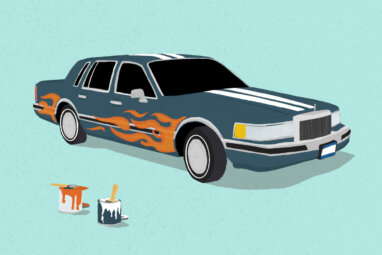The Store Is Dead — Long Live the Store
Legacy offline stores and next-generation online retailers are each finding their way to a new kind of shopping experience: the showroom.
Offline demise and offline renaissance is the paradox of new retail writ large. Swiss multinational financial services company Credit Suisse projects that by the time the numbers are in, more than 8,500 stores in the United States will have closed in 2017.1 Consensus estimates predict that 25% of all shopping malls will shrink or close in the near future. At the same time, online-first brands from suitcase retailer Away to eyewear maker Warby Parker are successfully opening pop-ups, showrooms, and full-blown stores.2 Not to be outdone, Amazon.com, the granddaddy of online-first, has opened bookstores and is rumored to be planning to open 2,000 AmazonFresh grocery stores over the next 10 years.3
The net result: Offline is dead and dying, yet it is also alive and thriving.
To understand why, consider the arc of Bonobos, founded in New York City in 2007 as Bonobos.com and sold in 2017, as Bonobos, to Walmart Stores Inc. for $310 million.4 CEO Andy Dunn founded the company with Brian Spaly while both were MBA students at Stanford’s Graduate School of Business.5 Their vision was simple: Sell men a better-fitting pair of pants, and do it without the “burden” of physical stores. Looking back to 2007, Dunn readily admits, “I really thought stores were going away at that time.”6 Ironically, nearly 10 years later, The Economist praised Bonobos for pioneering a new form of physical retail. The “zero-inventory store” is a small-footprint store where customers get a high-service, tactile experience, purchase via tablet, and order the product shipped to a location of their choosing.7
The trends exemplified by Bonobos reveal retail’s future: It will be small footprint and high experience, regardless of whether the retailer is online-first with offline additions or offline-first (legacy) plus e-commerce.
In this article, we pursue two interconnected themes: the expansion of online-first retailers into offline stores that serve the purpose of “supercharging” customer value, and the transformation of the stores of offline-first retailers from fulfillment-dominant centers into experience-dominant centers, which simultaneously reduce store size and inventory while improving the customer experience. In doing so, we explain how offline-first retailers can benefit from mimicking the showroom concepts started by online-first retailers, and why online-first retailers can benefit from opening more traditional stores.
References (26)
1. J. Wattles, “Stores Are Closing at an Epic Pace,” April 22, 2017, http://money.cnn.com.
2. J. Smith IV, “Long Live Retail: Fashion Startups Finally Learned Why Physical Stores Still Matter,” Observer, Jan. 8, 2015.






Comments (2)
Kevin Moucha
Richard Reisman